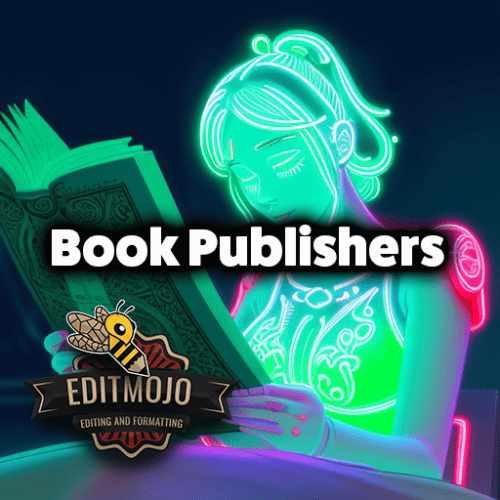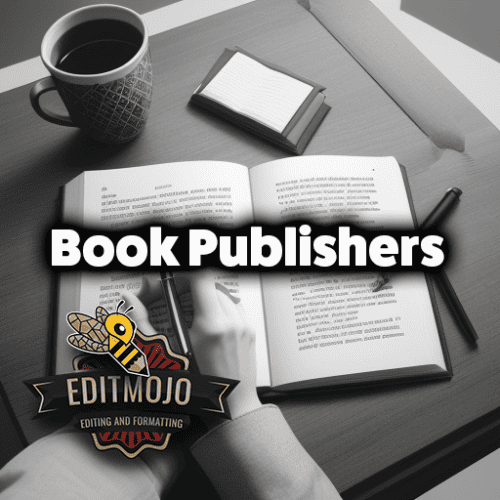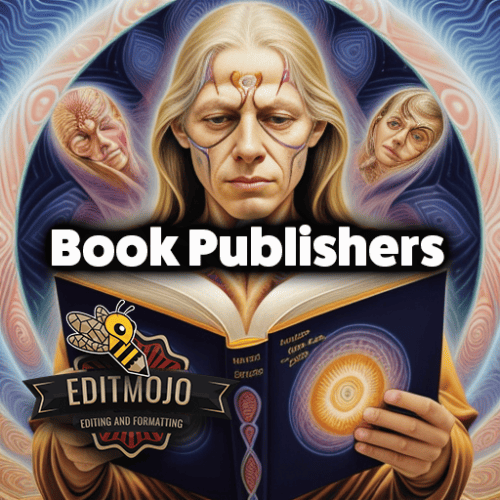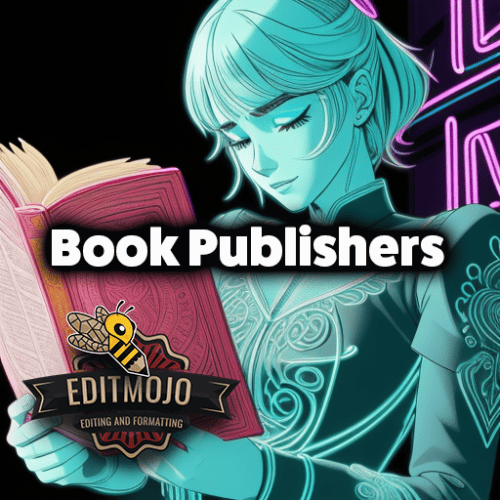Book Publishers
Navigating the evolving landscape of book publishers: an in-depth analysis of traditional and emerging models. Over the millennia, the art of storytelling has transformed in unfathomable ways. From sharing tales around the campfire to the proliferation of printed works after Gutenberg’s press, the narrative thread of humanity continues to be woven. Today, we find ourselves navigating the dynamic digital revolution, the shockwaves of which have permeated the publishing industry as well. The transition from physical to digital, traditional to self-publishing, and regional to global has reshaped the contours of this industry. This post aims to demystify the book publishing process, delve into current trends and changes, and explore the challenges and opportunities that lie ahead in this rapidly evolving industry.
Key Takeaways
| Key Points | Details |
|---|---|
| Traditional Publishing | A model where the publisher invests in the production, marketing, and distribution of the book. Authors gain credibility and professional support but may earn lower royalties. |
| Self-Publishing | Authors take control of the entire publishing process, including writing, editing, designing, publishing, and marketing their book. They may earn higher royalties but must also bear the upfront costs. |
| Hybrid Publishing | Combines elements of traditional and self-publishing. Authors invest upfront, but the hybrid publisher provides professional services. |
| Literary Agents | Act as intermediaries between authors and publishers in the traditional publishing model, helping to secure publishing deals and negotiate contracts. |
| Digital Publishing | The creation of e-books, audiobooks, and other digital content. Has seen a surge with the proliferation of digital reading devices and platforms. |
| Print-on-Demand | Technology allowing books to be printed as needed, reducing financial risks for self-published authors and small publishers. |
| Diversity and Inclusivity | A growing trend in the publishing world, with more books being sought and published by authors from underrepresented backgrounds or featuring diverse characters. |
The Book Publishing Industry: An Overview
Traditional Book Publishing
Traditional publishing, the time-honored pathway for authors, involves a complex dance between several key players: the author, agent, editor, and publisher. An author pens the manuscript, which is then represented by a literary agent. This agent then pitches the manuscript to editors at publishing houses. If the editor is captivated by the work, they present it to the acquisitions board. Once approved, the book is published and marketed, typically at the publishing house’s expense.

Emerging Models in Book Publishing
However, technological advancements and changing consumer behaviors have disrupted this traditional model, giving rise to alternative publishing paths.
Self-Publishing has emerged as a viable route for authors who prefer complete creative control. In this model, authors are the drivers of the process – writing, editing, designing, publishing, and marketing their book.
Hybrid Publishing is a blend of traditional and self-publishing. While authors invest upfront in publishing services, they benefit from the industry expertise of the hybrid publisher.
The digital realm has also given birth to Digital Publishing, including e-books, audiobooks, and podcast novels, providing a more accessible and convenient mode of content consumption for the tech-savvy reader.
Comparing Traditional Publishing and Self-Publishing
In the journey to seeing one’s name on a book cover, authors must decide between the beaten path of traditional publishing and the adventurous trail of self-publishing. Both have their merits and pitfalls.
Traditional publishing offers a certain credibility, comprehensive professional services, and robust marketing support. However, authors often sacrifice a degree of creative control and potential royalty earnings. Notable authors like J.K. Rowling, who brought the wizarding world of Harry Potter to life, benefited immensely from this model.
On the flip side, self-publishing places the reins in the author’s hands, allowing for complete creative control and the potential for higher royalty rates. However, it demands a significant personal investment of time and money, with the author handling everything from editing to marketing. Success stories like E.L. James’ “Fifty Shades of Grey,” initially self-published, demonstrate its potential.
The Role of Literary Agents
In the traditional publishing model, literary agents serve as critical intermediaries between authors and publishing houses. They scout talent, secure publishing deals, and negotiate contract terms. Authors querying literary agents must ensure they present a compelling pitch – a well-crafted letter and a polished manuscript – to pique the agent’s interest. Agents receive a mountain of queries, and rejection is commonplace. Authors should take these rejections in stride, refining their approach with each attempt.
The Impact of Technology on Book Publishing
Technology has not only widened the publishing avenues available to authors but also brought sweeping changes in how readers consume content.
The rise of Digital Publishing has seen a surge in e-books and audiobooks, driven by the convenience of portable reading devices like Amazon’s Kindle and audio platforms such as Audible.
Print-On-Demand (POD) services have also gained prominence, allowing authors to print books as needed rather than incurring the cost of a large print run. This technology significantly reduces the financial risk for self-published authors and small publishers.
Moreover, social media has become a powerful tool in an author’s arsenal, aiding in marketing and author visibility. Platforms such as Instagram have even spawned new subcultures like “Bookstagram,” where authors and readers interact directly, fostering a vibrant, global community of book lovers.
More intriguingly, we are witnessing the dawn of artificial intelligence in publishing. AI holds potential to streamline the publishing process, from automating copy-editing to predicting market trends. The utilization of AI technologies, like Grammarly for proofreading and Kindle Direct Publishing’s predictive analytics, is just the tip of the iceberg.

The Business of Book Publishing
Understanding the business side of publishing is crucial for authors. A book contract is more than just an agreement to publish a book; it outlines the author’s royalty rates, advances, rights, and other legal details.
Royalties are the author’s cut of the book sales, typically ranging between 10% to 15% for physical books and up to 70% for e-books in self-publishing. Advances are an upfront payment to the author, which must be “earned out” through book sales before receiving royalty payments.
Traditional publishers tend to offer higher advances, banking on their marketing efforts to drive sales. In contrast, self-published authors may not have an advance but stand to gain a higher share of royalties.
Decoding book sales statistics and bestseller lists can also be a convoluted process. Bestseller lists, such as the New York Times Best Sellers or Amazon’s Best Sellers, have their unique criteria for rankings. An in-depth understanding of these nuances can help authors strategize their marketing efforts.
Diversity and Inclusivity in the Publishing World
The global movement towards diversity and inclusivity hasn’t left the publishing industry untouched. There’s a growing recognition of the need to represent diverse voices in literature.
Publishers are increasingly seeking books written by authors from underrepresented backgrounds and books featuring diverse characters. The hashtag #OwnVoices, started on Twitter, has become a movement to promote books written by authors who share their protagonist’s marginalized identity.
Initiatives like We Need Diverse Books are leading the charge towards a more inclusive literary world. They strive to create a world in which all children can see themselves in the pages of a book.

The Future of Book Publishing
The publishing industry, like any other, is subject to the tides of change. Several trends can be foreseen on the horizon.
The growth of hybrid and self-publishing is likely to continue as more authors seek creative control and higher royalties. Increased digital consumption will steer publishers to invest in e-books, audiobooks, and other digital formats. However, print books are unlikely to disappear, with many readers still cherishing the tactile experience of reading.
Independent bookstores will remain vital community hubs and crucial platforms for promoting new authors and books. They provide a personalized, curated reading experience that large online retailers cannot replicate.
As technology advances, we might see AI playing a bigger role in the industry, from content creation to reader analytics. The concept of AI-authored books, while still in its infancy, might become a reality sooner than we imagine.
Traditional Publishing vs. Vanity Publishing
It’s critical for authors to understand the key differences between traditional and vanity publishing to make informed decisions about their publishing journey.
Traditional Publishing provides comprehensive services to authors, from editing to marketing, at no cost. The publisher, banking on the potential success of the book, invests in its production and promotion, hoping to recover these expenses and make a profit from book sales. As a gatekeeper of sorts, a traditional publisher also provides a level of credibility to the author and their work.
On the contrary, Vanity Publishing, often confused with self-publishing, involves authors paying a company to publish their book. While this route can lead to a faster publication process, the lack of selective curation can result in a market saturated with low-quality books. Authors should tread carefully in the vanity publishing sphere to avoid unscrupulous companies that might take advantage of their eagerness to be published.
Top Ten Traditional Publishers in the U.S.
The publishing industry is dominated by a handful of major players often referred to as “The Big Five.” However, several other publishing houses also play a significant role. Here’s a list of the top ten traditional publishers in the U.S.:
- Penguin Random House
- Hachette Book Group
- HarperCollins
- Macmillan Publishers
- Simon & Schuster
- Scholastic
- Houghton Mifflin Harcourt
- John Wiley & Sons
- Workman Publishing
- Chronicle Books
These publishing houses have a wide range of imprints specializing in various genres, from literary fiction to children’s books, each with its distinct style and submission guidelines.

EditMojo: A Valuable Tool for Authors
In the modern landscape of publishing, where the lines between traditional, hybrid, and self-publishing continue to blur, resources that aid authors in polishing their manuscripts are invaluable. One such resource is EditMojo.
EditMojo is an online platform offering comprehensive editing services for authors. They strive to refine your manuscript while maintaining your unique voice and style, a delicate balance that’s crucial to successful editing. Their services range from proofreading, which focuses on correcting surface errors, to copy editing and line editing, which dive deeper into language and style. They also offer developmental editing, which provides an in-depth critique of the manuscript’s content and structure.
What sets EditMojo apart is their commitment to providing personalized feedback. Their editors don’t just correct errors; they also explain why changes are needed, providing authors with a better understanding of the editing process and enhancing their writing skills. They also consider the genre and target audience of the book, tailoring their approach accordingly.
Working with a service like EditMojo can be an excellent investment for authors, particularly for those choosing the self-publishing route. While self-publishing offers greater creative control, it also places the onus of ensuring the book’s quality squarely on the author. Professional editing services can help bridge this gap, refining the manuscript and making it ready for publication.
However, even authors who are seeking traditional publishing can benefit from these services. An impeccably edited manuscript can help an author stand out from the slush pile and catch the attention of agents and publishers.
In a world where anyone can publish a book, services like EditMojo ensure that the quality of the writing doesn’t get lost in the process. They help authors put their best foot forward, increasing their chances of success in the competitive world of book publishing.

Conclusion (Book Publishers)
The landscape of book publishing is dynamic and continually evolving. While the traditional publishing model remains robust, alternative models are providing authors with unprecedented control and possibilities. The advent of digital technologies has brought forth exciting opportunities and challenges in equal measure.
Regardless of the pathway an author chooses, one thing remains constant – the magic of a well-told story. As we traverse through this digital age, the timeless charm of narratives, the allure of diverse voices, and the promise of undiscovered tales will continue to fuel the publishing world.
The journey of publishing can be as rewarding as it is challenging. Authors, whether traditionally published, self-published, or somewhere in-between, are explorers charting their unique paths. As Madeleine L’Engle once said, “You have to write the book that wants to be written. And if the book will be too difficult for grown-ups, then you write it for children.”
This is the spirit that fuels the vibrant, ever-evolving world of book publishing. As authors, publishers, and readers, we are all part of this extraordinary storytelling tradition. Let’s continue to write, read, and share the stories that want to be written.
Top Five Questions and Answers
| Questions | Answers |
|---|---|
| What is traditional publishing? | Traditional publishing involves a publisher investing in the production, marketing, and distribution of a book. They offer authors professional services and credibility. |
| How does self-publishing differ from traditional publishing? | Self-publishing allows authors to control the entire publishing process, including writing, editing, designing, publishing, and marketing their book. This comes with the potential for higher royalties but also requires upfront investment. |
| What is the role of literary agents in the publishing process? | Literary agents act as intermediaries between authors and publishers, helping to secure publishing deals and negotiate contracts. |
| How has technology impacted book publishing? | Technology has introduced new publishing models like digital and print-on-demand, expanded avenues for marketing and visibility, and streamlined the publishing process with tools like automated proofreading and predictive analytics. |
| Why is diversity and inclusivity important in the publishing world? | Diversity and inclusivity ensure representation of varied voices in literature, providing readers with a broader perspective and promoting understanding and empathy. |
Top Seven Resources and Further Reading
- Understanding Book Publishing: A Guide for Authors – Comprehensive overview of the publishing process.
- The Pros and Cons of Traditional Publishing – Detailed analysis of the traditional publishing model.
- Self-Publishing vs Traditional Publishing – Comparison of self-publishing and traditional publishing.
- The Role and Responsibilities of a Literary Agent – In-depth look at the role of literary agents.
- The Impact of Technology on Publishing – Exploration of the effects of technology on the publishing industry.
- We Need Diverse Books – Initiative promoting diversity and inclusivity in publishing.
- EditMojo – Comprehensive editing services for authors.
